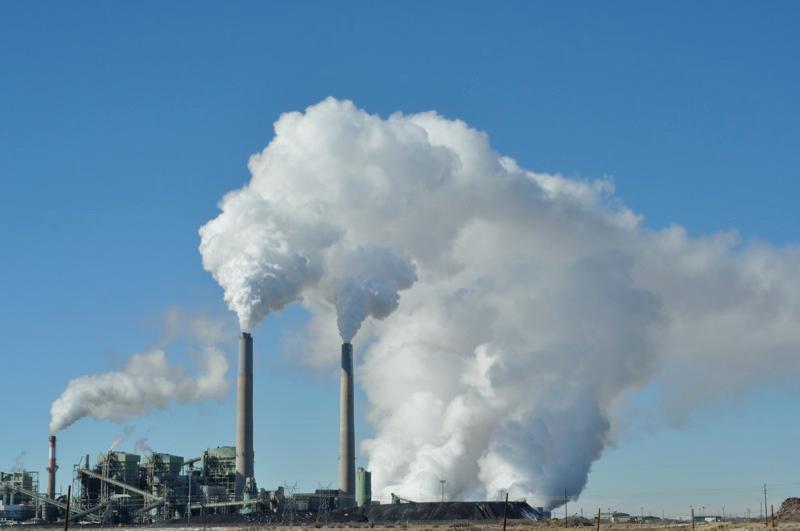The US Supreme Court will hear a challenge to EPA mercury emissions rule
If upheld, the EPA’s Mercury Rule would require coal-fired power plant operators to take extensive and expensive actions to clean the emissions coming from their plants.
The Supreme Court’s decision to hear an industry appeal of new EPA rules limiting mercury and other toxic pollutants from coal-fired power plants is just one of several lawsuits in the pipeline — and that could spell bad news for the coal industry.
“The law is finally catching up with the health effects and the environmental effects of coal-fired electricity — in fact, coal mining and coal use in general,” says Pat Parenteau, a professor of environmental law at Vermont Law School.
In the past few years, the EPA has issued a number of new rules under the Clean Air Act: the Cross State rule, dealing with pollution that drifts over state borders and affects people downwind; the proposed rule to restrict carbon emissions; the rule setting limits on mercury emissions; and new regulations on smog.
“All of these rules are aimed squarely at coal,” Parenteau says, “and all of them are saying that coal's health effects have to be taken into account and have to be regulated. That means coal-fired generation in the United States is in serious trouble, and I think the industry’s legal challenges are reflecting that they're under stress.”
The EPA says its 2011 proposed rule to cut toxic power plant pollution would prevent up to 11,000 premature deaths, 4,700 heart attacks and 130,000 asthma attacks each year. The coal power plant operators say the rule’s costs would vastly outweigh its benefits and the EPA is overstepping its authority by not considering those costs in its regulatory process.
The EPA estimates the costs to industry at $9.6 billion dollars. But the agency also asserts the rule will create between $37 and $90 billion in health benefits for people in the affected states. Under the Clean Air Act, the EPA may regulate emissions where “appropriate and necessary,” after studying the issue. The rule has been “20 years in the making,” according to the agency.
“In the power sector alone, coal-fired power plants are responsible for 99 percent of mercury emissions,” EPA wrote in their 2011 announcement. “The proposed rule provides up to four years for facilities to meet the new standards and, once fully implemented, will prevent 91 percent of mercury in coal from being released into the air.”
Last April, the United States Court of Appeals for the District of Columbia Circuit upheld the EPA rule by a 2-to-1 vote. Two of the three judges agreed that the EPA had discretion to regulate toxic emissions based primarily on health effects and did not have to consider the costs. The dissenting judge’s opinion led to the Supreme Court’s decision to hear the appeal.
When the Supreme Court agrees to hear a case, Parenteau says, “it’s usually not to simply affirm the lower court. So at least four of the nine justices have some questions about why EPA didn't consider costs.”
Interestingly, however, the court has framed the legal question differently than in the original case. The court is now asking, “was it reasonable for EPA to decide that costs were not relevant to the consideration of regulation on the basis of health benefits,” which is a narrower question than industry wanted, Parenteau says.
And there is another noteworthy legal twist, Parenteau points out: Power plants are now subject to regulation under two different provisions of EPA rules — Section 112, which regulates hazardous pollutants, and Section 111(d), which regulates carbon.
“The industry groups claiming that EPA's mercury rule is invalid are the same groups that are claiming, in the challenge to the carbon rules, that EPA doesn't have authority to regulate coal-fired power plants because they are already regulated under Section 112,” Parenteau explains. “If the court overturns the mercury rule on the grounds that it was improperly adopted under Section 112, that will undercut the industry’s arguments that EPA can't regulate carbon emissions from coal-fired power plants under Section 111.
“So industry is actually arguing at cross purposes in these two cases,” he says. “Depending on which way the court decides the mercury rule, it may defeat their own argument in the challenge to the carbon rule.”
This story is based on an interview that aired on PRI's Living on Earth with Steve Curwood
Our coverage reaches millions each week, but only a small fraction of listeners contribute to sustain our program. We still need 224 more people to donate $100 or $10/monthly to unlock our $67,000 match. Will you help us get there today?
